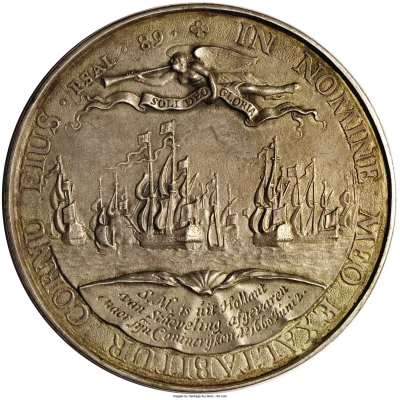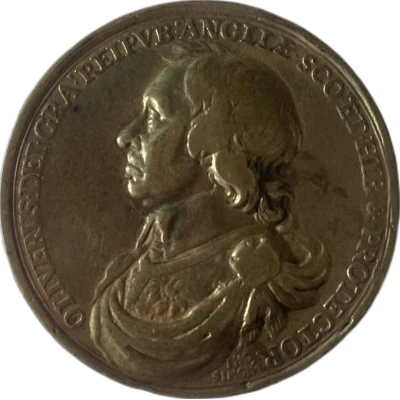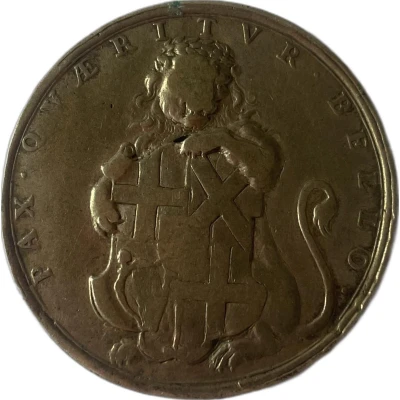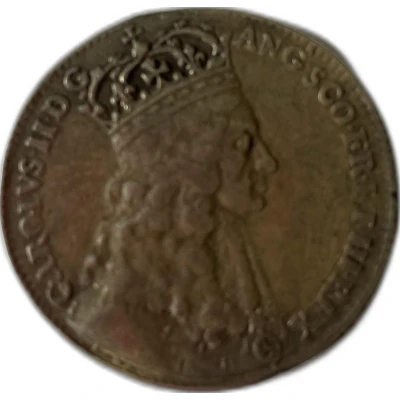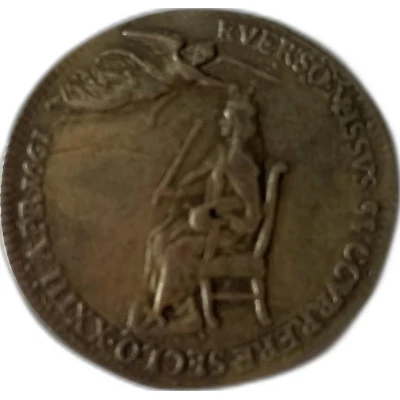Reverse
Fleet under sail, Fame with trumpet and scroll inscribed.
Script: Latin
Lettering: S.M. IS ÚIT HOLLANT VAN SCHEVELING AFGEVARN NAER FYN CONINCRYKEN Ao. 1660 JÚNI 2
Translation: His Majesty leaves Holland from Schevingen for his kingdom
Comment
1660 Great Britain Charles II Medal, MI 1:457, Eimer-210. Silver shell, 70 mm. Embarkation at Scheveningen. Produced with substantial relief, design by Peter Abele and signed with his quatrefoil rather than his monogram. The medal consists of two repoussé plates joined at the edge by a broad rim. Obverse CAROLUS. II. D:G. MAGNAE. BRIT. FRA. ET. HIB. REX. ("Charles II by the Grace of God Great Britain, France, and Ireland King"), bare-headed bust of Charles II facing right three-quarters with cuirass and neckcloth. Reverse IN NOMINE MEO EXALTABITUR CORNU EIUS - PSAL. 89 ("In thy favour our horn shall be exalted"), fleet under sail, Fame with trumpet and scroll inscribed SOLI DEO GLORIA ("To God only be the glory"), flying to left, Dutch inscription in three lines below, in incuse running script, S.M. IS ÚIT HOLLANT VAN SCHEVELING AFGEVARN NAER FYN CONINCRYKEN Ao. 1660 JÚNI 2 ("His Majesty leaves Holland from Schevingen for his kingdom"). (A single specimen from a Spink auction [3/2008, lot 39] shows the legend in Latin rather than English or Dutch as both recorded in Medallic Illustrations, and is believed to be unique.) Charles II arrived on English soil on May 25, 1660, marking the end of the British Interregnum, and entered London on his 30th birthday, May 29, 1660. The difference in dating is explained by the Old Style-New Style discrepancy. Historically important and remarkably well preserved.

